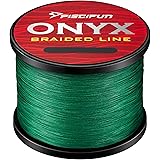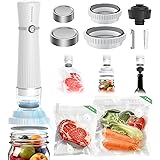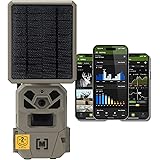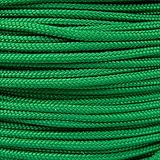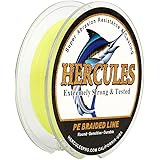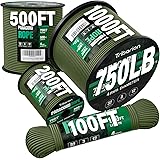Mastering Wilderness Survival Hacks: Essential Skills for Unexpected Emergencies
Finding oneself in a life-threatening situation, particularly in the unforgiving embrace of the wilderness, is a daunting prospect. Without adequate preparation and crucial knowledge, even a simple hike or camping trip can swiftly escalate into serious trouble. The video above offers a glimpse into vital wilderness survival hacks that could genuinely save your life when you are alone in the wild. This article will expand upon these ingenious methods, providing deeper insights and practical context to empower your readiness.
Fire Starting Mastery: Ignition Beyond Kindling
Initiating a fire is paramount in any survival scenario, offering warmth, protection from predators, purification of water, and a means to cook. However, the absence of traditional kindling or lighter fluid can pose a significant challenge. Fortunately, innovative survival skills can turn common items into effective fire starters.
As illustrated in the video, ordinary corn chips, such as Doritos, possess surprising flammability. These chips are rich in carbohydrates and oils, which act as a readily available fuel source. To utilize them, simply crush a handful, heap them into a small pile, and ignite with a spark or flame. The oils will cause them to burn steadily, providing enough time to ignite larger kindling.
Moreover, alcohol cleansing swabs, typically found in a first aid kit, are incredibly effective fire starters. Their alcohol content allows for rapid ignition, delivering a robust flame that can last approximately 60 seconds. This minute of steady flame is often more than sufficient to catch dry tinder and progressively build a sustainable fire. It is important to note that gathering suitable tinder (e.g., dry leaves, shredded bark, cotton) and kindling (e.g., small twigs) beforehand is critical for successful fire starting. A well-constructed fire lay, protected from wind, greatly enhances your chances of success.
Emergency First Aid: Rapid Wound Management in the Wild
Injuries sustained in a wilderness survival situation can quickly become life-threatening due to blood loss or infection. While a comprehensive first aid kit is always recommended, knowing how to improvise wound care is a truly invaluable skill.
One of the most counter-intuitive yet effective emergency survival hacks is the use of super glue for closing wounds. While not a substitute for professional medical attention, medical-grade cyanoacrylate (the active ingredient in super glue) has been used in hospitals for decades to seal minor cuts and lacerations. In an emergency, if you have a clean wound with edges that can be brought together, carefully pinch the skin closed and apply a thin layer of super glue to the outer edges of the wound. This creates a temporary seal, preventing further bleeding and significantly reducing the risk of infection until proper medical treatment can be sought. It is crucial to only apply it to the surface of the skin and never inside the wound itself.
Improvising Support: The T-Shirt Arm Sling
A nasty fall leading to a suspected broken arm or dislocated shoulder demands immediate stabilization to alleviate pain and prevent further damage. The video demonstrates a clever improvisation: crafting a temporary arm sling from a t-shirt or blanket. This particular outdoor survival technique is remarkably effective for stabilizing an injured limb.
To create this improvised support, carefully slide the injured arm’s elbow into the bottom hem of the t-shirt. Then, bring the rest of the shirt up and over the shoulder of the injured arm. Finally, thread the hand of the injured arm through the opposite armhole of the shirt. This configuration cradles the forearm and hand, using the fabric to bear the weight of the limb and reduce movement. The principle here is similar to that of a professionally designed sling: immobilizing the injury minimizes pain and protects it during arduous journeys to safety. Other pliable materials, such as a sturdy bandana, a belt, or even strips of strong cloth, can be adapted for similar purposes.
Sustenance in the Wild: Crafting a Bottle Fish Trap
Securing food is a fundamental aspect of wilderness survival, and a simple, effective method for catching small fish can make a substantial difference. The two-liter bottle fish trap, though seemingly basic, is a proven technique for passive food acquisition.
To construct this ingenious trap, carefully cut the top section of a 2-liter plastic bottle, approximately one-third of the way down. Invert this top section and place it inside the larger bottom section, creating a funnel. The small opening of the funnel should point downwards into the bottle. Secure the inverted top piece to the main body of the bottle, perhaps by punching small holes and tying them together with cordage or thin wire. Bait the trap with small pieces of food (bread, insects, or even shiny objects) and submerge it in shallow water, preferably near reeds or underwater structures where small fish congregate. As the video highlighted, such a trap can yield results incredibly quickly; the demonstration caught two baitfish in roughly two minutes. This rapid success underscores the efficiency of this trap for sustained food sourcing, particularly for catching smaller fish that can be eaten directly or used as bait for larger game.
Illuminating the Darkness: The Water Jug Lamp
When night falls in the wilderness, darkness can be disorienting and dangerous. A creative solution for ambient light, transforming a common water jug into a powerful lantern, is an excellent survival skill.
This hack leverages the principle of light diffusion. By simply filling a clear jug with water and attaching a headlamp (or any powerful flashlight) to its side, with the beam pointing inwards, the water acts as a diffuser. The light refracts and scatters through the water, illuminating the entire jug and casting a soft, widespread glow throughout your shelter or immediate area. This significantly outperforms the focused beam of a flashlight alone, providing broad illumination that is ideal for camp activities or simply psychological comfort. It is a brilliant example of maximizing the utility of limited resources.
Navigating the Unknown: The Improvised Compass
Losing your sense of direction in the wilderness can be perilous, making an improvised compass one of the most critical emergency preparedness tools in your mental arsenal. This ancient technique, detailed in the video, harnesses the Earth’s magnetic field.
For this method, you need a body of perfectly still water (a puddle or a cup of water), a small leaf, and a sewing needle. First, magnetize the needle by rubbing it vigorously in one direction against a piece of silk, hair, or even a dry piece of fabric. The friction helps align the magnetic domains within the needle. Then, carefully lay the leaf on the surface of the still water, ensuring it floats freely. Gently place the magnetized needle on top of the leaf. The needle, influenced by the Earth’s magnetic field and free to rotate, will slowly spin before settling. Once it stops, one end of the needle will consistently point north. Understanding cardinal directions is fundamental for proper outdoor navigation, guiding your path back to safety or towards known landmarks.
Signaling for Rescue: The Ping-Pong Smoke Bomb
In a true emergency, signaling for rescue is paramount. Beyond traditional methods, the video introduces an inventive bushcraft technique: creating a smoke bomb from a ping-pong ball. This is a highly effective, albeit unconventional, distress signal.
Ping-pong balls are made from celluloid, a highly flammable plastic that produces a dense, white smoke when burned. To construct this improvised smoke bomb, wrap a ping-pong ball tightly in aluminum foil, leaving a small opening or “funnel” at the top for air and smoke egress. Apply a flame to the bottom of the foil-wrapped ball. The heat will cause the celluloid to smolder and produce a considerable volume of smoke that will emerge from the funnel. This thick, visible smoke plume can be spotted from a distance, greatly increasing your chances of being located by search and rescue teams. It is a powerful illustration of how simple items can be repurposed for critical survival skills in dire situations.



